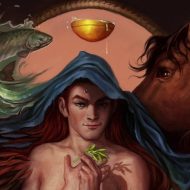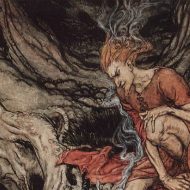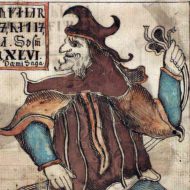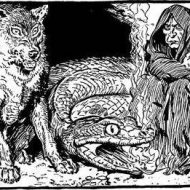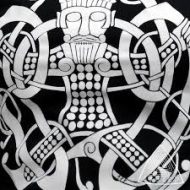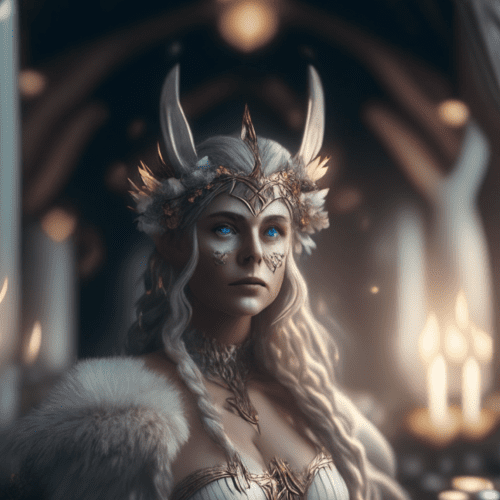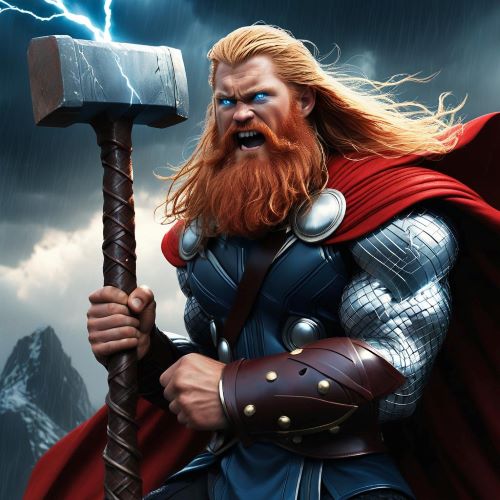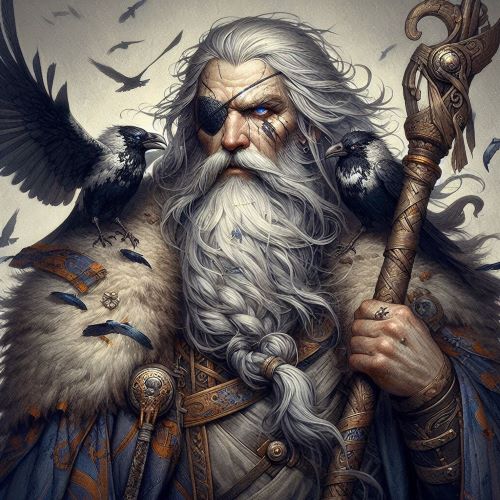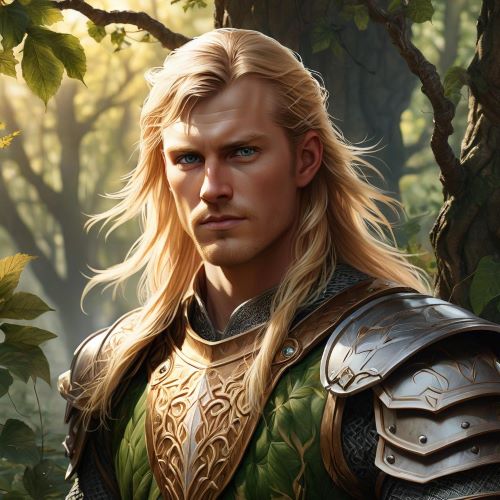Loki : The Trickster God
Listen
At a glance
| Description | |
|---|---|
| Origin | Norse Mythology |
| Classification | Gods |
| Family Members | Farbauti (Father), Laufey (Mother), Byleistr, Helblindi (Brothers), Sigyn (Wife), Narfi (Son), Angerboda (Wife), Jormungandr, Fenrir (Sons), Hel (Daughter) |
| Region | Scandinavia |
| Associated With | Prankster, Trickery, Shapeshifting |
Loki
Introduction
In Norse mythology, the god known as Loki is regarded as a prankster who enjoys playing pranks on his enemies and fellow gods. He is the brother of the god Odin and is often the one who digs the other gods out of their deepest holes. His name has negative connotations due to his actions and deceitful nature, such as his involvement in the death of the god Baldr and causing the Ragnarok or Doomsday.
Despite having no cult attached to him, he is regarded as one of the most prominent gods in Norse mythology. He is also one of the three gods who headlines multiple myths alongside Odin and Thor. He is also regarded as the enemy of the gods, as he entered their banquet uninvited and demanded their drink. Loki was bound to a rock (by the entrails of one or more of his sons, according to some sources) as punishment, thus in many ways resembling the Greek figures Prometheus and Tantalus. Also like Prometheus, Loki is considered a god of fire.
Loki may be depicted on the Snaptun Stone, the Kirkby Stephen Stone, and the Gosforth Cross. Scholars have debated Loki’s origins and role in Norse mythology, which some have described as that of a trickster god.
Physical Traits
Loki’s physical appearance is debated as he is sometimes depicted as a giant and otherwise as a god. This is the result of his mixed parenthood leaving scholars to rely heavily on his shapeshifting skills as an explanation for his changing physical appearance.
Family
Loki was the child of Farbauti, who was a jotunn or a giant and Laufey, though she was referred to as Nal in most accounts. His brothers were Byleistr and Helblindi.
Sigyn married Loki, and he later had a son named Narfi. He also had a relationship with the giantess Angerboda, who also gave birth to multiple children. Some of these include Jormungandr, who was the sea serpent of Midgard and the arch-nemesis of Thor, and a massive wolf known as Fenrir and the goddess Hel.
In another instance, he gave birth to an eight legged horse after he was impregnated by a stallion named Svadilfari while in the form of a mare. The offspring was named Sleipnir, which became the favourite mount of his brother, the god Odin.
Other Names
Controversy has often been raised over the origin of the name Loki. It is believed that the name originated from the Old Norse word logi meaning flame, but there is no sound linguistic basis for this. Instead, the various variants of the name, such as those found in Scandinavia, came from the Germanic root *luk-, which means “loops” such as Faroese Lokki, Danish Lokkemand, Norwegian Loke and Lokke, Swedish Luki and Luku.
Powers and Abilities
His main characteristics are his wit and lack of weapons. He also rarely engaged in combat. One source claims that he had a pair of magical shoes with him, but other sources have not made this claim. He also didn’t have any well-tested items such as garments, vehicles, or charms.
In one instance, he was said to have borrowed a magical cloak from the goddess Freya. However, he later returned it. Despite his lack of personal items, he is believed to have been a prominent supplier of them to other gods. He was known to have taken the form of various animals, such as a fly, a salmon, and a flea. He also reportedly used to be accompanied by an old woman known as Thokk who reportedly refused to cry when the god Baldr died.
For his crimes against the other gods, the gods eventually obtained a chain from the entrails of his son, Narfi. After he had been tied up, a venomous snake drops poison on him, and his wife, Sigyn, is at his side to catch the venom. When the bowl of venom gets full, Sigyn has to leave her husband’s side to pour out the poison. When the drops of venom then fall on Loki, he writhes in pain, and these convulsions cause earthquakes till he breaks free at Ragnarok.
Modern Day Influence
The rise of the Germanic revival during the 19th century led to the resurgence of the mythological heroes and baddies of yore, including the likes of Loki. He also appeared in works of art, such as Richard Wagner’s “Der Ring des Nibelungen” in which he was depicted as a servant of the god Odin who betrayed him.
In the movies and comic books released by Disney and Marvel, Tom Hiddleston portrayed the role of Loki. He was depicted as the half-brother of Thor, and he had a conflicted relationship with him. He resented how much attention and love Thor was receiving, especially from the people of Earth. In the comics and movies released by Disney and Marvel, he was depicted as a master shapeshifter. Unlike in mythology, where he would assume animal forms, he would often take the form of humans in these adaptations. Loki also had a stand alone series on the OTT platform Disney+.
Related Images
Frequently Asked Questions
What is Loki the Norse god of?
How evil is Loki in Norse mythology?
Is Loki the son of Odin?
Are Thor and Loki brothers?
Thor and Loki are not adopted brothers in Norse myth. Thor is Odin’s son, but Loki is the blood son of giants, Fárbauti and Laufey.
Who kills Loki in myth?
Norse myths don’t show Loki getting definitively killed. Bound and tortured by venom, he suffers until Ragnarok. Then, prophecies say he’ll break free, fight the gods, and finally meet his end at the hands of Heimdall.

